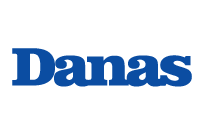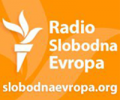Nataša Kandić: Albanian children extend their hand to us
 Five children – Saranda, Jehona, Fatos, Lirie and Genz – survived an execution by firing squad in Podujevo on 28 March 1999, in which 14 members of the Bogujevci and Duriqi families, including babies and old people over 70 years of age, died in a hail of bullets fired by members of the ‘Scorpions’, the combat unit of the Serbian Ministry of the Interior (MUP).
Five children – Saranda, Jehona, Fatos, Lirie and Genz – survived an execution by firing squad in Podujevo on 28 March 1999, in which 14 members of the Bogujevci and Duriqi families, including babies and old people over 70 years of age, died in a hail of bullets fired by members of the ‘Scorpions’, the combat unit of the Serbian Ministry of the Interior (MUP).
For this crime, a court in Serbia sentenced by final judgment five members of the unit: four were given 20-year prison sentences and one a 15-year sentence. The children first came to Serbia in July 2003; at that time, the oldest survivor among them was 15 years old and the rest were under 10 years of age. They gave testimony at two separate trials of members of the ‘Scorpions’, and then on two occasions before a civil court in Belgrade. In December 2013, they arrived for a special occasion, namely, to speak through the language of art about the life of their family prior to and after the murder of 12 of its members. Their installation, presented at the Belgrade Culture Centre, provoked stormy political and social reactions, ranging from a ban to support from Serbia’s highest government representatives. A significant portion of the civil society disapproved of the presence of the Serbian Prime Minister at the exhibition, publicly recalling that he is the same Dačić who was a top official at the time the crimes were committed, and the same Dačić who, until recently, had been denying the crimes against the Albanians.
I should imagine that the rabble-rousing text that appeared in Večernje novosti on 14 December, which referred to the event as an “Albanian propaganda stunt in Belgrade”, gave the Belgrade Culture Centre, as the organizer of that ‘propaganda’, some cause for concern. I have little doubt that the members of the Management Board, as well as our Minister of Culture, breathed a sigh of relief when, on the morning of 18 December 2013, the MUP banned the exhibition. The ban was served by the Stari grad Police Station, only to be withdrawn within the next hour by the Minister of the Interior who, for once, reacted promptly under pressure from non-governmental organizations. Hence Prime Minister Dačić’s statement that he and Deputy Prime Minister Vučić had “used our influence in order that the exhibition should take place”.
Half an hour before the formal opening, it was announced that the Serbian Prime Minister would come to the exhibition. He was preceded, at my invitation, by the present Commander of the SAJ (Special Anti-Terrorist Unit), Spasoje Vulević, and Doctor Dragan Marković, also a member of the SAJ. They had saved the lives of the five children. After hearing the sound of heavy gunfire, they entered the yard and found the ‘shot terrorists’, an expression used for years in Serbia in reference to Albanian victims, lying along the wall of the Gashi family’s low house. Vulević and the doctor saw a small hand reaching out from under the pile of dead women and children. They dug through the blood-soaked bodies and found the three girls and two boys. They took the seriously wounded children to a hospital in Pristina. They met the children again after 14 years.
From under the pile of bodies, Vulević dug up Fatos, whose tiny hand he had seen first. The doctor recalled carrying the spindly Saranda, drenched with blood, in his arms. He reiterated to the journalists that “it wasn’t easy driving along the road watched by NATO”. Although the number of ‘Scorpions’ members who lined up and shot the women and children has not been established, it is known that only two or three policemen came to the aid of the wounded children. On that day, there were at least 500 members of Serbia’s police and military forces in Podujevo, as well as the complete municipal government. An operation of ‘evacuating civilians’ from the town was under way at the time. However, had it not been for Vulević and the doctor, the wounded children would not have survived until a Serb burial party arrived to pick up the dead three days after the murder. That was the Serbian way in Kosovo.
The children guided Dačić through the exhibition, from the day room to the hospital room to the courtroom in which they gave evidence. He listened to them without interrupting. He showed sympathy for the children as victims, though it was as if someone else was responsible for the injustice inflicted on them. Later, he sought to vindicate the then government of Serbia, saying that it had not given the ‘Scorpions’ a mandate to kill Albanians; next, speaking in his capacity as a politician of the new Serbia, he conceded that numerous crimes had been committed against Albanians. What matters is that Dačić did not come to the exhibition as a private person but in his capacity as Prime Minister, i.e. on behalf of the Serbian government and state. That was decisive. It was appropriate too that the children talked first and the Prime Minister after.
The Serbian Prime Minister did well to visit an exhibition testifying about Serb crimes. I have in mind the fact that prior to the ‘Bogujevci’ exhibition, no exhibition dealing with Serb crimes has been possible in Belgrade. The Serbian Prime Minister showed sympathy, which was decent of him. It is not something to make light of.
However, civil Serbia has attached no importance to this event. Its prevalent position is, ‘We all know very well who Dačić and Vučić are’ – ‘They’re the same persons, they haven’t changed’.
True, we all know who Vučić and Dačić are. We know their past. We can listen to all their speeches from the 1990s, and again from 1999, by merely selecting You Tube on Google. But let us be fair, at least as far as Kosovo is concerned. Was Serbia’s civil society any better than its government during the NATO air bombing campaign? Belgrade’s intellectual elite addressed the international community in a letter asking NATO to stop bombing Serbia. However, no request was made to Milošević for the Serbian police and army to stop killing Albanians, although they all knew, or should have known, what was going on in Kosovo. I still feel shame about what we did to the Albanians. One needed no courage to go to Kosovo and see what the police and the army were doing. They did everything openly, including looting and murder. Everything, except the skies above, was Serb property. Including Albanian lives. We, the non-governmental organizations, journalists and intellectuals, knew what was going on, but we were indifferent and selfish, and we made common cause with Milošević, Dačić, Vučić…That’s how it was. Let us accept our share of the blame too.
The victims need official recognition and public sympathy, above all from the representatives of the state, i.e. from those they blame for their suffering, injustice and the loss of their families. This is an obligation upon Vučić and Dačić, regardless of whether they are the same persons they were during the 1990s and in 1999. No one can deny that they have taken responsibility for Kosovo and achieved more that all the previous governments. They have done away with false patriotism.
The Prime Minister’s appearance at the Albanian children’s exhibition indicates that Dačić and Vučić no longer deny the Serb crimes in Kosovo, and that they are ready to recognize and respect the Albanian victims. This is a prerequisite for the recognition of the Serb victims on the part of the Albanians.









